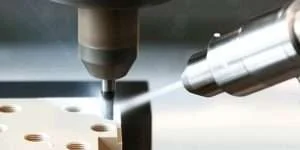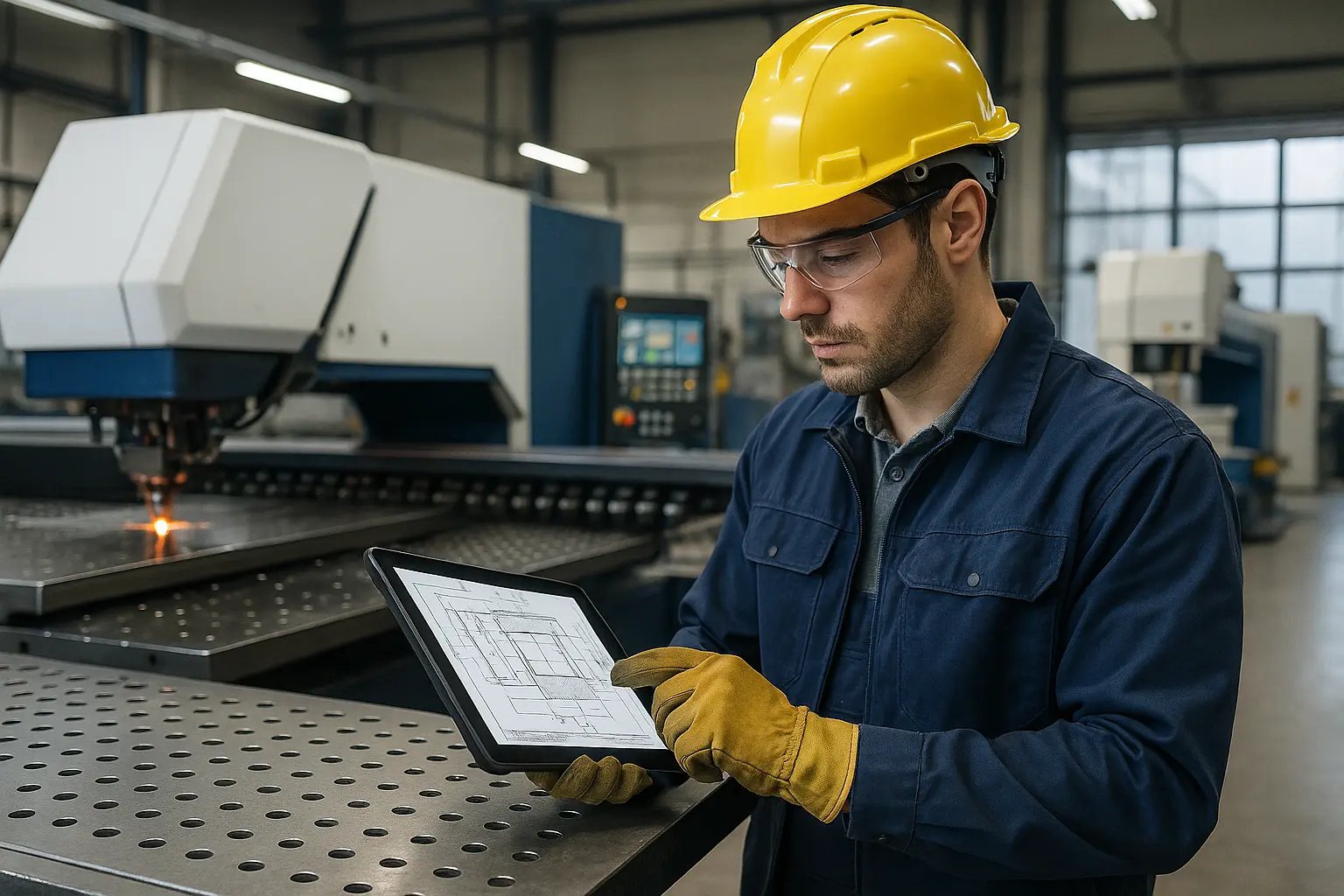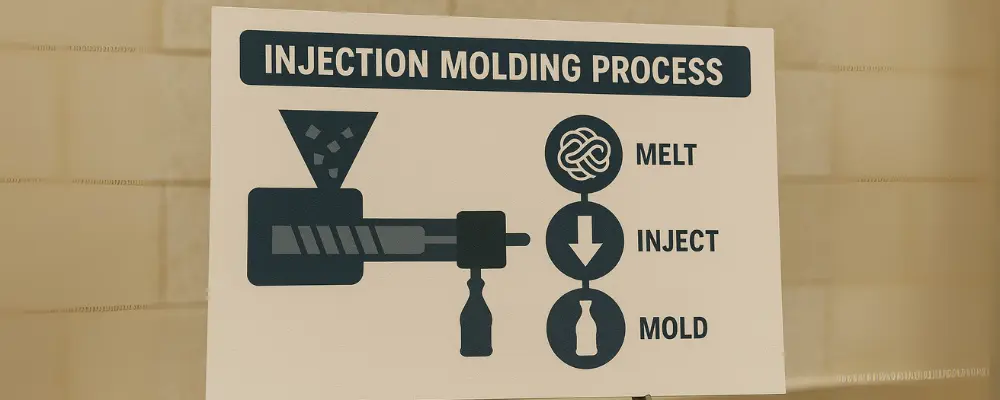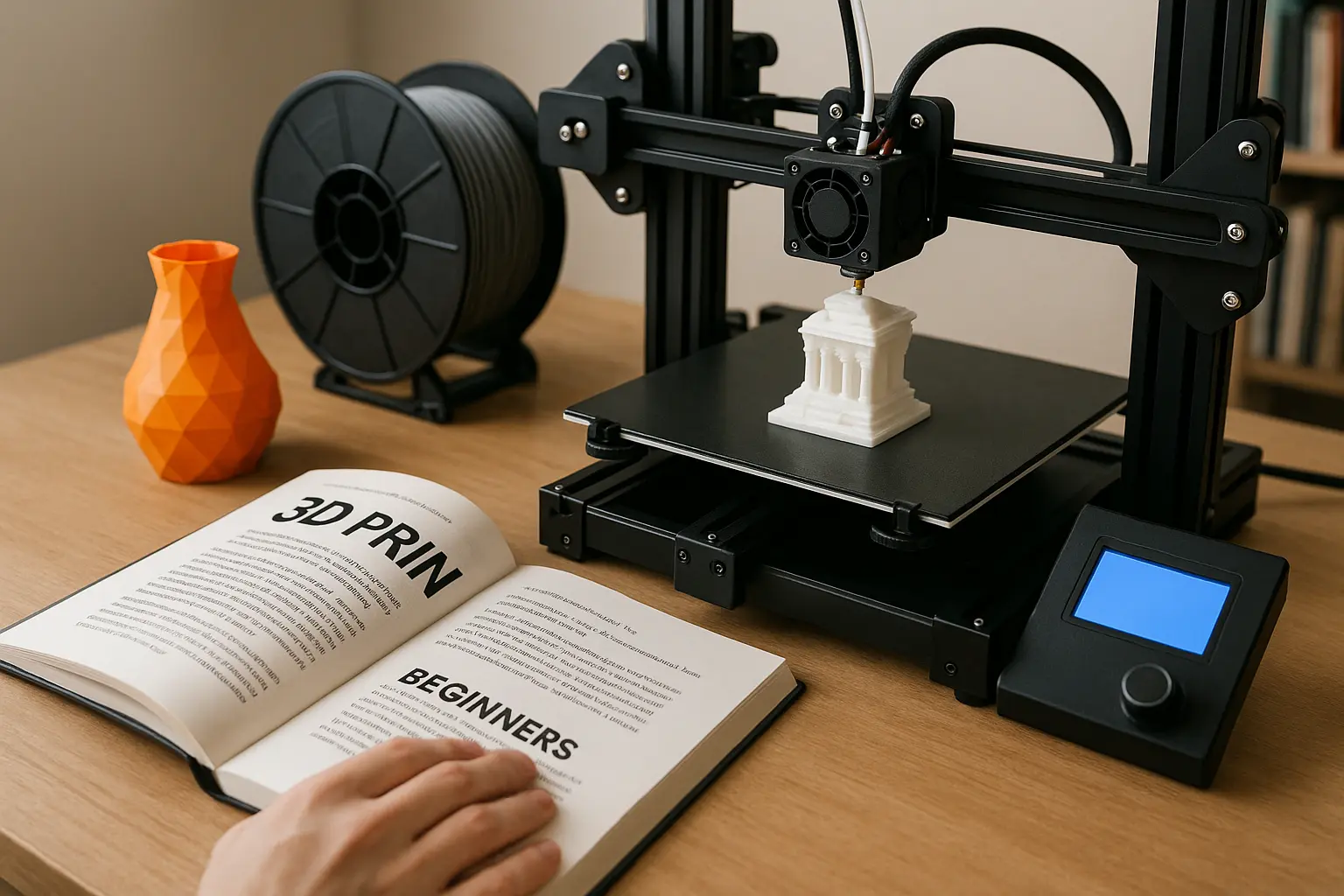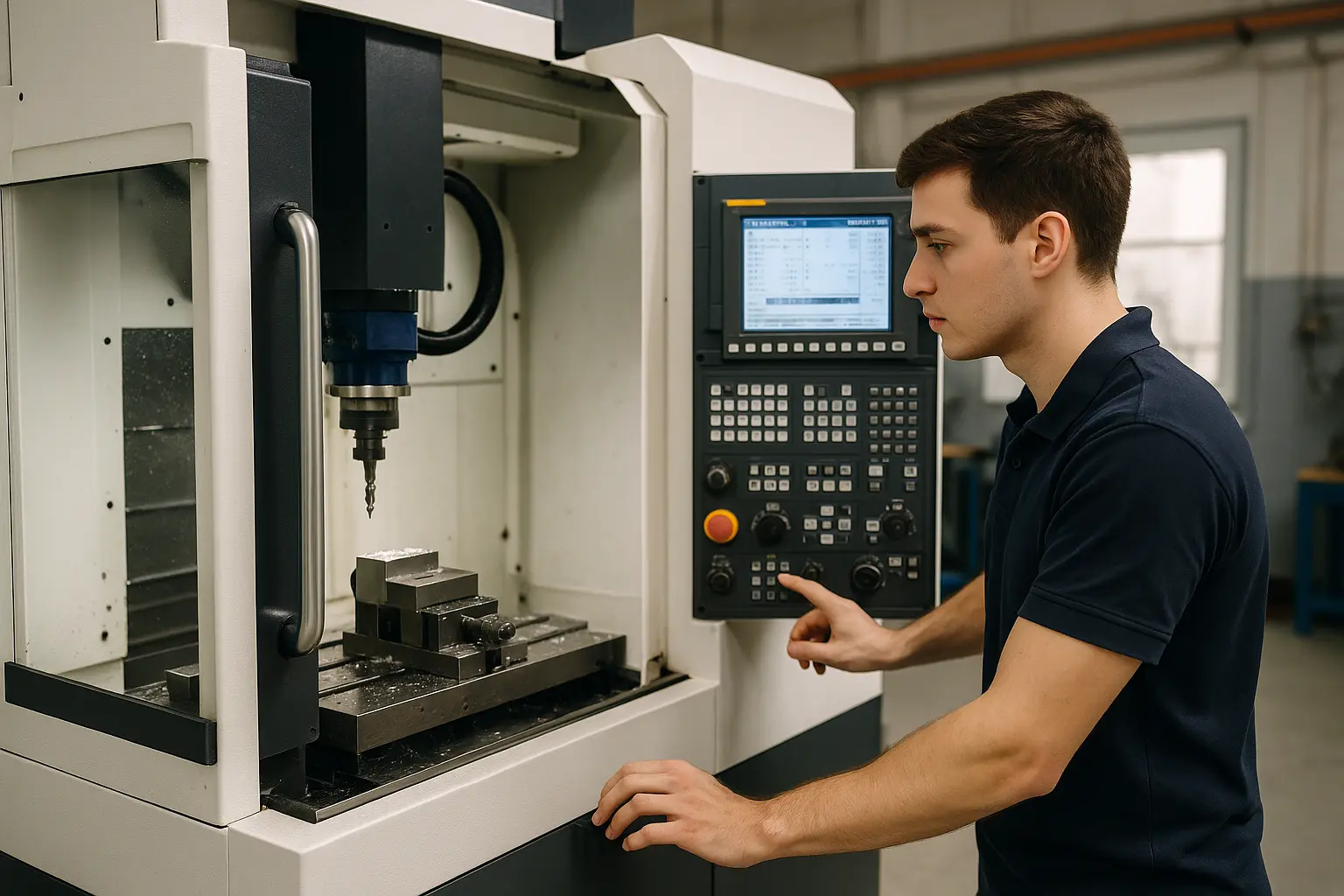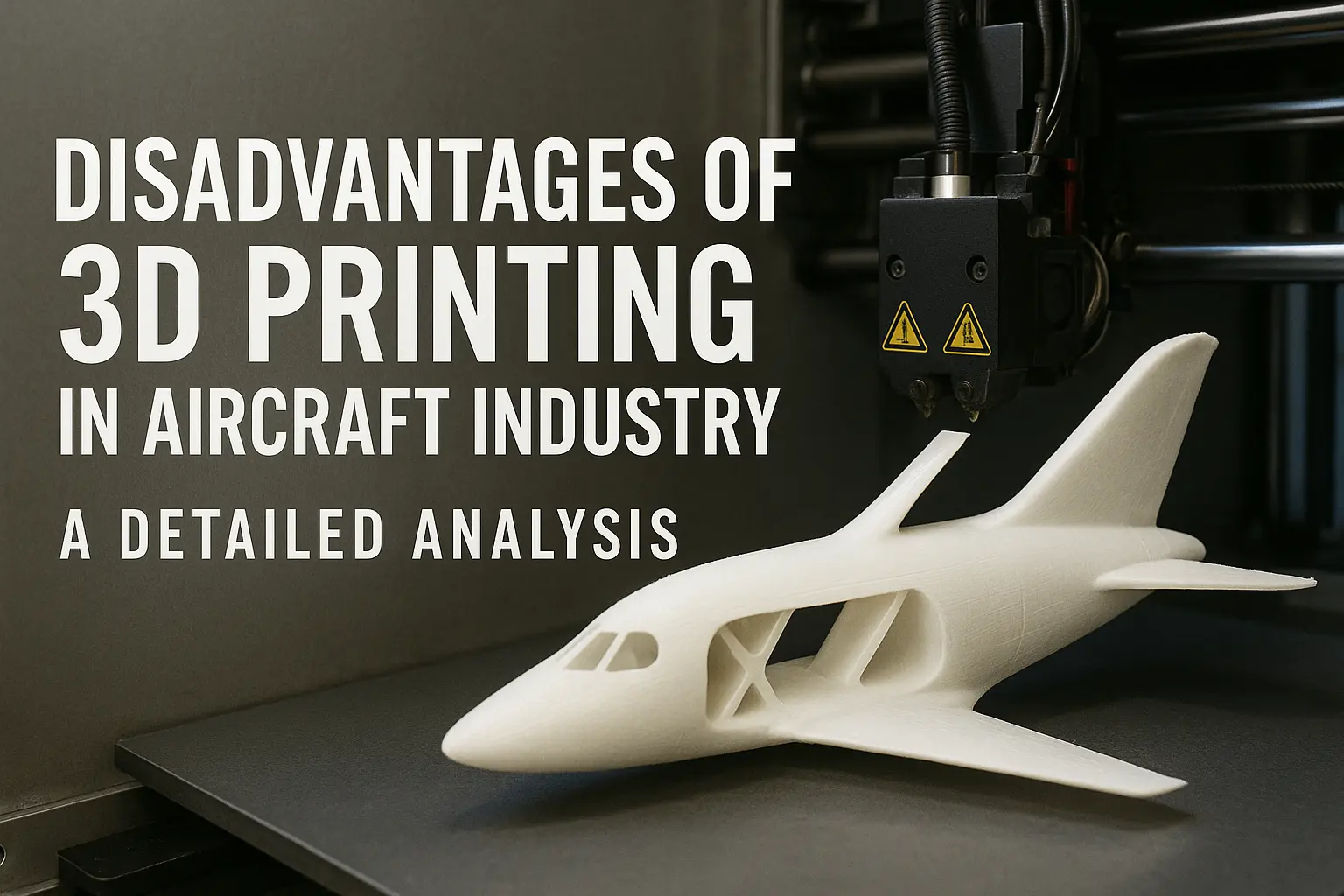Tough plastics like PEEK machining are excellent alternatives for metals during parts fabrication, especially when you need to reduce the weight of said part. PEEK thermoplastic possesses unique properties that make it a good choice for manufacturing parts for different industries.
This article will provide detailed info on PEEK plastic machining, exploring its properties, types, benefits, and limitations. We also include critical tips that all machinists must adhere to when machining PEEK to ensure a successful plastic fabrication. Read ahead!
What is PEEK Machining Plastic?
PEEK, which means polyetherketone, is a colorless, organic, engineering-grade thermoplastic. The polymer belongs to a class of semi-crystalline plastic polymers called polyaryletherketone (PAEK). It is a high-performance resin, possessing considerable strength and dimensional stability even in harsh conditions. PEEK has a melting point of 343 degrees Celsius (649 degrees Fahrenheit), giving it the ability to withstand high-temperature conditions.
Compared to many other industrial-grade polymers, PEEK machining is expensive, yet it is the go-to plastic for various industrial applications. This is because of its high mechanical and chemical resistance, which makes it resistant to wear and tear conditions, crash, abrasives, heat, etc. Therefore, PEEK is suitable for use in extreme environmental conditions.

Properties of PEEK
We have already briefly touched on some of the general properties of PEEK machining plastics. However, in this section, we’ll take a more detailed approach to the properties of this polymer.
Thermal Resistance
PEEK has a high glass resistance of up to 143℃ (289 degrees Fahrenheit), indicating its high thermal resistance. Therefore, this plastic maintains its structural integrity even upon exposure to high temperatures.
Moreover, as mentioned earlier, the melting point of PEEK is over 300 degrees Celsius, which suggests the plastic is pretty viable at temperatures above 200 degrees. Therefore, PEEK is a reliable material for parts and components exposed to high-temperature conditions.
Excellent Mechanical Properties
Compared to other plastic polymers and resins, PEEK possesses excellent fatigue resistance. It boasts considerable mechanical and tensile strength, ranging from 90 to 160 MPa, and impressive elasticity. Generally, the mechanical properties of PEEK compared to other similar polymers stand out, making it a common choice for machining and other industrial applications.
Chemical and Corrosion Resistance
PEEK machining has excellent resistance to various chemical agents, including concentrated mineral acids, bases, hydrocarbons, and organic solvents. The chemical inertness of this polymer is comparable to that of metals.
Furthermore, this polymer possesses considerable corrosion resistance. Indeed, this feature is more related to metals. However, the chemical composition of this plastic gives it some chemical properties comparable to those of nickel and steel.
Dimensional Stability
PEEK is suitable for use in extreme conditions. Its high dimensional stability is one of the reasons for this. The polymer has a low thermal expansion coefficient, and high impact strength, among other features, making it retain its dimensional accuracy in the machining process. This makes it a valuable material for fabricating parts for the aerospace and medical industry, where a slight deviation from design specifications may be detrimental.
Machinability
If you carefully followed all the properties we have discussed thus far, you’d agree that PEEK machining will be challenging. The toughness, abrasiveness, and high melting point, among other features, make machining this plastic a little difficult because PEEK causes wear and tear on cutting tools.
However, PEEK, like other challenging materials like titanium, composites, and PPS can achieve precise machining parts with the right tool, technique, and expertise. Therefore, when machining PEEK, the machinist must understand its machinability to achieve high-quality machined components.
Types of PEEK Polymers for Machining

Polyetherketone polymers are available in two broad categories, with their differences tailored to the specific application of the material.
Industrial Grade PEEK
The industrial-grade PEEK possesses excellent mechanical properties. It has high tensile and impact strength, abrasion, flame, and crash resistance, with a low friction coefficient. Therefore, because of the good mechanical features of this plastic, it is commonly used for industrial and engineering purposes – consequently, the name industrial-grade PEEK machining.
Moreover, some plastic and polymer manufacturers even reinforce industrial-grade PEEK with carbon fiber to enhance its already excellent physical and mechanical properties. That said, this type of PEEK is used in various industries – automotive, electronics, aerospace, chemical, food, etc.
Medical Grade PEEK
This class of PEEK machining has mechanical properties tailored to meet the strict requirements of the medical industry, especially biocompatibility per ISO 10993. That is, they are suitable for manufacturing parts that come in contact with the human body and tissues without causing harm. In addition, they also possess good overall characteristics, such as chemical resistance and the ability to withstand harsh conditions of sterilization.
Furthermore, they are generally radiolucent, which is invisible under X-ray, CT, or MRI, further reinforcing their application in medical implants, replacements, dental instruments, etc.
Benefits of Machining PEEK Plastic
Like other materials ideal for CNC machining stainless steel operations, there are many advantages of PEEK machining polymers. This section will split these benefits into two categories, the first will discuss the actual benefits of this material, while the other category will discuss the pros of the machining process.
Material Benefits
- Excellent mechanical and chemical resistance
- Resistant to wear and tear
- Heat and flame-resistant
- Low moisture absorption
- Abrasion resistant
- Thermal resistance
- Biocompatibility
- Degradation resistant
Machining PEEK Benefits
- Achieves high precision and dimensional accuracy;
- Extreme manufacturing speed and reproducibility;
- The high melting point of PEEK permits rapid machining speeds and feed rates.

Limitations to PEEK Plastic Machining
Because of its incredible strength and toughness, among other mechanical properties, PEEK is a reliable alternative for metals in parts fabrication. However, we already mentioned that PEEK machining is relatively challenging.
Below are some of the limitations of machining this thermoplastic.
- It requires heat treatment, often annealing;
- Poor Heat dissipation, risking excessive heat buildup;
- PEEK CNC machining requires special handling and expertise on the part of the machinist to achieve a successful project;
- Excessive or deep drilling may result in breakage or cracking.
Applications of CNC Machined PEEK Components
Having previously mentioned that PEEK machining material occurs as an industrial-grade or medical variant, the applications of each variant are different.
Industrial-grade PEEK Applications
Industrial-grade PEEK machining is used in making parts, structures, and components for various industries, especially the aerospace and automotive industries. Below are some of the components this polymer is used in fabricating.
- Rollers and wheels
- Bearings
- Washers
- Rings
- Seals and manifolds
- Blocks of equipment
- Brushings
- Wire and cable insulation, etc.

Medical grade PEEK Applications
The medical grade PEEK is used for creating parts for the medical and healthcare industry. Examples of such components include:
- Biological implants
- Orthopedic devices and bone replacements
- Spinal fusion devices
- Dental instruments
- Drug delivery systems
- Trauma traction devices, etc.
Important Tips for PEEK CNC Machining
PEEK machinability is often challenging. Hence, the a need to adhere to these crucial tips for successful PEEK plastic machining.
Anneal PEEK Before Machining
Annealing is a heat treatment process that helps relieve stress in a material. It’s one of the essential tips required for high-quality PEEK machining. The process involves gently heating PEEK rods or plates to a predetermined annealing temperature, often around the glass transition temperature. The thermoplastic is then allowed to remain at that temperature for a while before cooling to room temperature, then the polymer is ready for actual machining.
Sometimes, PEEK may require several annealing stages, especially if the material will experience long spells of machining. That said, besides relieving built-up stress, annealing increases the crystalline properties of the plastic, dimensional stability, and reduces the chances of cracking and deformation during CNC machining magnesium processes.
Use Correct Machining Tools
Even though it’s plastic, PEEK polymers are generally very tough with high tensile strength and abrasive to regular machining tools. That is, they cause the wearing of these cutters and eventual damage. Therefore, you should use the appropriate tools for machining this plastic.
Therefore, carbide-cutting tools are highly recommended for PEEK machining. Polycrystalline Diamond (PCD) is another ideal tool for cutting PEEK, especially industrial-grade PEEK reinforced with carbon fiber, or in cases where the design specification calls for extreme precision.

Cooling and Lubrication
PEEK thermoplastic has a relatively low thermal conductivity – it has poor heat dissipation. This increases the risk of excessive heat buildup, leading to warping, distortion, or softening of the material. Therefore, machinists must adopt effective cooling measures when machining the plastic.
You could use an ideal cooling agent, such as a typical petroleum-based coolant, to ensure the material retains an optimal amperage range below the glass transition temperature for more efficient machining.
On the other hand, since PEEK machining tends to cause wear and tear of cutting tools, lubrication is also effective for preventing or reducing the chances of tool wear.
PEEK vs. Delrin Machining: What’s Different?
Delrin shares similar physical and chemical properties with PEEK machining. Both thermoplastics are good alternatives for metal because of their incredible strength and durability for different applications. However, Delrin machining is relatively easier than PEEK.
Below are some of the differences between them.
- Tooling: While you can use standard CNC machine cutting tools for Delrin machining, you should use more specialized cutters, like carbide to cut PEEK.
- Heat dissipation during machining: Because of the structural composition of PEEK, it is more likely to experience build-up during machining than Delrin. Therefore, lubrication and cooling are more crucial when machining PEEK than Delrin.
- Applications: Both thermoplastic polymers have vast applications. However, PEEK is preferred for components or fabrications exposed to more extreme conditions. On the other hand, Delrin is more suitable for parts that require a low friction coefficient, such as gear and bearings.
- Feed rate and cutting speeds: Because of the higher potential for heat build-up, machinists should adhere to lower cutting speed and feed rate during PEEK machining. However, you can machine Delrin at a higher speed.
Xcmachining: Your Reliable Partner for PEEK Plastic Machining
We already established that PEEK machining requires knowledgeable machinists. So, how best can you achieve a successful fabrication using this polymer? The answer is to partner with a reliable service for your project – Xcmachining!
Including machining PEEK, metals, and other thermoplastics,Xcmachining is an expert in CNC machining services. We boast highly skilled machinists and operators who ensure high-quality fabrications, adhering to all your specifications.
In addition, we offer one-stop services in injection molding, 3D printing, sheet metal fabrication, and other related manufacturing processes. Just contact us today to start a new project!
Conclusion
PEEK is a highly versatile thermoplastic with vast applications. However, it possesses some specific challenges, especially during machining, often because of its high-temperature resistance and abrasiveness. Therefore, PEEK machining requires experienced machinists with knowledge of the appropriate techniques for machining this thermoplastic.
FAQs
How thick is PEEK plastic?
The thickness of PEEK plastic varies, depending on design specifications and other factors. However, standard PEEK sheets vary between 0.5mm (0.02 inches) and can be as thick as up to 10 mm (0.4 inches).
What are the machining challenges associated with PEEK?
The factors that make PEEK machinability challenging include the poor heat dissipation during machining and its abrasiveness.
How does PEEK compare to metal concerning strength and weight?
Being a plastic, PEEK is significantly lighter than metals. However, because of its unique chemical composition, PEEK possesses considerable strength, more significant than that of standard plastics. Therefore, it possesses an excellent strength-to-weight ratio, which makes it highly beneficial for various applications.

